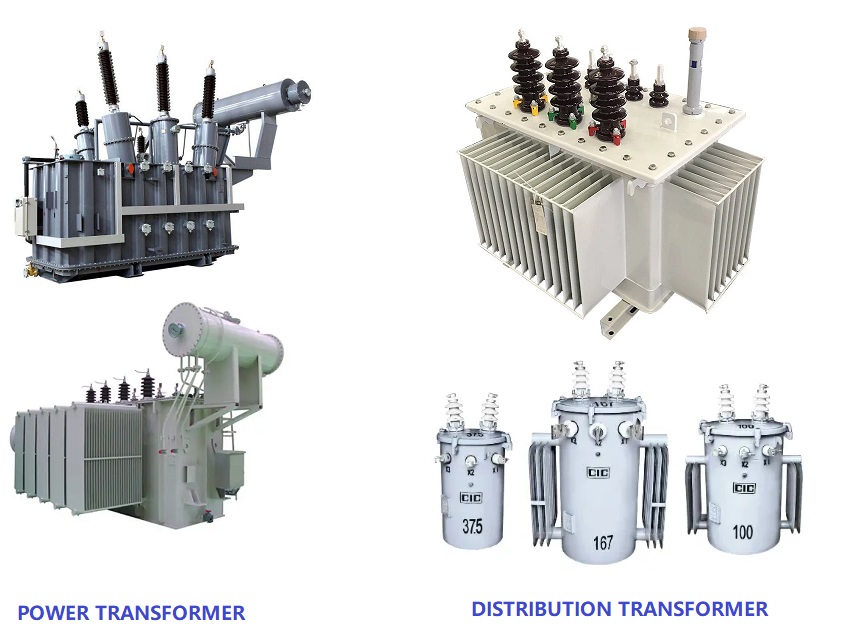A transformer is a static electrical device working on the principle of electromagnetic induction that changes the level of current and voltage in a circuit without changing the frequency of the supply.
Depending on the design, configurations, operations, and purpose of use, transformers work to step up or step down the level of voltage and current without hampering the power and frequency of the supply.

Difference between a Power Transformer and Distribution Transformer:
1. Purpose: Distribution transformers reduce high voltage to lower levels for consumer usage, making power safe for household appliances. Conversely, power transformers amplify the voltage to facilitate the long-distance transmission of electric power.
2.Function:Distribution transformers primarily reduce voltage levels. Power transformers typically increase voltage levels but can also step down voltage when required.Don’t compromise on power management; choose our 3 phase meter panel board today for smooth, uninterrupted power distribution.
3.Power Rating: Distribution transformers have a power rating below 200 MVA. Power transformers have ratings exceeding 200 MVA, enabling large-scale energy transmission.
4.Voltage Rating: Distribution transformers commonly have voltage ratings from 11 kV to 110 V. Power transformers have higher ratings, from 33 kV to 440 kV and beyond.
5.Winding Configuration: Distribution transformers have a delta-connected primary winding and a star-connected secondary winding, providing a neutral point for single-phase use. Power transformers typically have delta-connected windings, with some exceptions.
6.Size: Distribution transformers are compact, enabling convenient installation near consumer sites. Power transformers are bigger, reflecting their capacity to handle higher voltages.’
7.Operating Period: Distribution transformers operate even during no-load periods. Power transformers function only during load periods.
8.Load Fluctuations: Distribution transformers are designed to cope with significant load fluctuations. Power transformers experience fewer fluctuations due to their primary role in power transmission.
9.Operating Conditions: Distribution transformers typically function below full load. Power transformers generally operate at full load, reflecting their role in high-power transmission. Enhance your power systems with our trusted distribution transformer metering solutions.
10.Leakage Reactance: Distribution transformers have minimal leakage reactance, supporting their role in maintaining a stable power supply. Power transformers have higher leakage reactance, accommodating their high voltage operations.
11.Voltage Regulation: Distribution transformers excel in voltage regulation, which is crucial for providing a consistent power supply to consumers. For power transformers, voltage regulation is less critical due to their role in power transmission.
12.Applications:Distribution transformers distribute electrical power to consumers, which is crucial for everyday utility. Power transformers are used for stepping up (and occasionally down) voltage in generating stations, receiving stations, substations, etc.
13.Location: Power transformer usually installed at key nodes such as power plants and substations. Distribution transformer installed close to users, such as distribution substations or outdoor box-type transformers in urban distribution networks.
Kingrun Transformer Instrument Co.,Ltd.


More Transformer Testers from Kingrun
